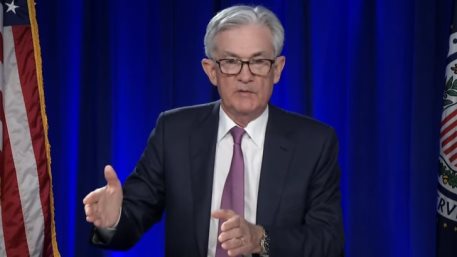
The US Election Day Takes the Cake in the Most Eventful Week in 2020
This is poised to be the most eventful and probably the most volatile week throughout 2020 so far, with top-tier economic and political events all around. Undoubtedly, the most widely anticipated of those is the Presidential Election in the US, which is going to take place on Tuesday.
The market has been pricing in a very probable Joe Biden win for quite a while now, but that is not to say his victory is assured. The market would receive every of the so-called swing states that goes to Trump as a surprise, which could, in turn, incite massive volatility outbursts on most US assets.
Due to the epidemic conditions in the country and the unprecedented in scale early voting, counting the ballots could be delayed. Any such delays, whether they be by several hours or several days, would likely unnerve the markets.
It has been widely speculated that a narrow Joe Biden win would not be received lightly by Donald Trump who has been barraging series of tweets, questioning the legitimacy of distant voting. By casting a shadow of a doubt over the fairness of the election process, he has prompted extra uncertainty.
In a scenario in which Joe Biden wins but Donald Trump refuses to cede power and takes the outcome of the election to the US Supreme Court, markets are likely to remain unnerved by persisting uncertainty.
It seems that only a landslide Biden victory, the legitimacy of which would be hard to dispute, would lead to diminished overall volatility shortly after the election results are published.
Meanwhile, a Trump victory would certainly come in as a surprise – a Black Swan type event – which could serve as a catalyst for further volatility spikes in the next following days.
Jerome Powell and the Rest of the FOMC Have to Weigh in On the Election Results
The Federal Open Market Committee of the Federal Reserve is scheduled to meet on Thursday to deliberate on its current monetary policy stance. The initial market forecasts anticipate the near-negative Federal Funds Rate to be kept unchanged at 0.25 per cent.
The gathering is to be held just a couple of days after the election date, which represents the most substantial reason as to why the Committee is likely to refrain from making any significant changes currently.
FOMC members would have to wait for the results in order to weigh in effectively on who would shape Washington's policy over the next four years. Moreover, the Committee would have to consider the possible roads ahead for a potentially new Government as far as fiscal policy is concerned, as MP needs to work in conjunction with FP.
Finally, the decisions reached during ECB's recent meeting could underpin the ultimate outcome of FOMC's next meeting in that the FED could decide to remain vigilant until December and monitor the further development of the pandemic.
Non-Farm Payrolls at the End of the Eventful Week
The third most prominent event taking place this week is once again happening in the US. The release of the Non-Farm Payrolls data would underscore the recent developments in the labour market.
According to the initial market expectations, the unemployment rate is projected to remain on the current trajectory and depreciate by 0.2 per cent in October. So far, the recuperating American economy has been able to reduce the rate in five consecutive months.

Should headline unemployment fall to the anticipated 7.7 per cent mark, such a result would have typically been interpreted as a positive sign for the value of the dollar. This week, however, the significance of the aforementioned events could overshadow the potentially robust employment numbers.
At any rate, the greenback looks poised to be the most volatile currency this week. Given that the BOE is also scheduled to deliberate on its Official Bank Rate on Thursday, the GBPUSD pair becomes of prime interest.
As can be seen on the 4H price chart below, the price action has been establishing a bearish flag pattern ever since the conclusion of our previous analysis of the pair. Currently, the GBPUSD is trading nearer to the major support level at 1.29000.
The latter could serve as a turning point for the price action, as it has done on several occasions in the past. Nevertheless, the continually surging demand for the greenback as a safe currency could continue to drive the cable down south.

Other Prominent Events to Watch for:
Monday – ISM Manufacturing PMI in the US.
Tuesday – RBA Cash Rate in Australia; New Zealand Unemployment Rate; BOJ Monetary Policy Minutes.
Wednesday – ISM Services PMI in the US; ADP Non-Farm Payrolls in the US; Retail Sales in Australia; Qualcomm Inc. is reporting AMC.
Thursday – Official BOE Cash Rate in the UK; EU Retail Sales; Alibaba Group Holding Ltd. BMO;
Friday – Unemployment Rate in Canada.




















